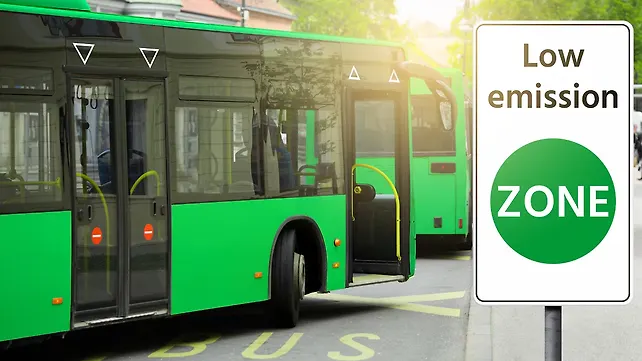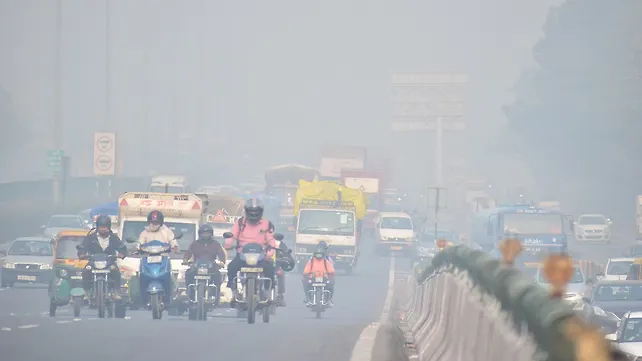
The air quality of Delhi NCR has been drawing global attention for the last few years for no applauding reasons. Breathing there is tantamount to passive smoking of multiple cigarettes each day.
The state-wide large automotive fleet is indeed a chief contributor to anthropogenic air pollution. Many of the reports addressing vehicular pollution have been suggesting to arrest the same at the earliest.
After numerous stakeholders’ long hue and cry before the Hon'ble National Green Tribunal followed by the Apex Court in the well-known Vardhaman Kaushik vs Union of India case, the Delhi transport department started deregistering its entire petrol-fuelled fleet ageing more than 15 years, post January 1, 2022. The similar age limit for diesel-powered vehicles is set to be 10 years only, as diesel exhausts high toxicity and carcinogenicity.
It must be understood that a vehicles’ performance deterioration with mileage is compounded by many factors including usage, driving behaviour, traffic conditions, loading conditions, terrain, etc., wherein the non-adherence with adequate maintenance practices exacerbates it.
Exhaust emissions emanating from any vehicle are an inestimable complex and multivariable function of these factors. The effect of the unidirectional passage of time on vehicles' health can be picture-framed only if all the operational parameters and car care efforts exert impacts of measurable magnitudes. The so-far unestablished one-on-one relationship between age and vehicular pollution was the principle and an irrefutable assertion by diverse stakeholders to orient the verdict in their favour.
However, moved by the unbounded apprehensions originating from the mammoth ecological-cum-economic vulnerability posed by dirty vehicles, the National Green Tribunal found it more than right to use age as a gauge to safeguard individuals from the potentially devastating effects on their health and to protect their right to life as guaranteed under article 21 of the Constitution of India.
Indeed, ageism appears to be the only good-fit solution amidst the prevalent scenario. This Pareto distribution-based segregation will phase out most of the gross polluting vehicles, which are predominantly fitted with old technologies and are ill-maintained.
However, this watchfully chosen instrument has its inherent vagueness likewise any other empirical practice. It draws no fine line between gross polluters and the compliant vehicles but observes age as the sole determining criteria. A few innovative and fool-proof measures are much needed to address still unresolved or newly germinated issues, including:
Scrapping Off Well-Maintained Vehicles
Many vehicle owners adhere to the manufacturer's recommendations and keep their vehicles well maintained. A large section of such owners comprises retired older adults, who sporadically use their vehicles, and the lower-middle-class families with single-vehicle ownership to whom it offers a great aid in their daily lives.

Such an age-based thumb rule will pose financial hardship in replacing their well-performing asset with a newer unit when the COVID pandemic hit them hard with heavy salary cuts, low employment opportunities, and drained savings. Moreover, any such substitution will only mount an extraneous burden on already strained natural resources.
It is crucial to understand that it is not alone the on-road emissions that contribute to vehicles' life-cycle emissions, but their production phase also accounts for a significant share. Independent of operating phase emissions, the manufacturing phase emissions will only cover a much larger share over the life-cycle emissions' pie case and yield a higher value of total emission per mile if phasing out of well-maintained under-operated vehicles continues.
Relocation Of Ill-Maintained, Highly Polluting Vehicles
The judiciary orders bound the stakeholders to deregister older fleet from the Delhi NCR region. It had flooded the concerned state transport departments with a myriad of No Objection Certificate (NOC) issuance requests to relocate vehicles to other stations. However, such relocation may serve as a pressure relief valve for all those owners who possess a well-maintained car, finding a fair price deal and successfully transferring it to the permitted regions.
But unfortunately, these orders put no tab on checking the relocation of ill-maintained and highly polluting vehicles. Instead, such provisions provide an escape door to too many morally unrestrained owners, who fit well within defined age brackets, to relocate their vehicle irrespective of the vehicles' roadworthiness and environment-worthiness.
Such mindless behaviour of self-centrists is thwarting the consciously aimed amelioration in national emission inventory and turning a significant part of efforts going futile. Adequate measures are much needed to cease the seizure of any such opportunity channelised through the loophole(s).
Plying (Younger) Dirty Vehicles
Vehicle upkeep plays a significant role in dipping the on-road emissions from an in-use vehicle. The tailpipe exhaust from a poorly maintained vehicle adds multi-fold emissions in comparison with maintained vehicles not only of the same age but older ones too. Many studies and reports, published in the recent past including those from TERI, have been suggesting that the integration of inspection, maintenance and certification practices, and that too against road load conditions is much promising in curbing vehicular pollution.
Conclusion
Leveraging the art of empiricism is best when available as the only option. But an art, which appears to be amazing at the moment, may turn out to be baffling if it fails to address the complexity of systemic dynamics. The nation quickly needs to develop feasible solutions that may earmark the environmental worthiness of in-use vehicles irrespective of their age and thereupon check the extraneous emission emanating from them.
Only such all-inclusive solutions can ensure that our collective drive to decarbonise the on-road fleet doesn't turn futile, motives aren't derailed, and a handful of gross polluters don't succeed in mocking the spirit of Article 21.
About the Author: Vareesh Pratap is a Global Climate Ambassador at the Climate Interactive which is an independent, not-for-profit think-tank grew out of MIT Sloan in Cambridge, Massachusetts, USA. He is a current NIDHI-EIR fellow at IIT Mandi and working on projects related to operational sustainability of conventional vehicles. Academically, he holds a bachelors in Mechanical Engineering and also an incoming student at the University of Cambridge this year for M.Phil. in Energy Technologies. He also holds a diversified experience spanning for about 5 years in a leading Public Sector Undertaking of Government of India under the aegis of MoPNG.
Also Read:
WayCool Joins Climate Group's EV100, Aims For All Electric Fleet By 2030
The Right Moves For Environment
Climate Angels Launches Syndicates For Climate Tech Start-ups